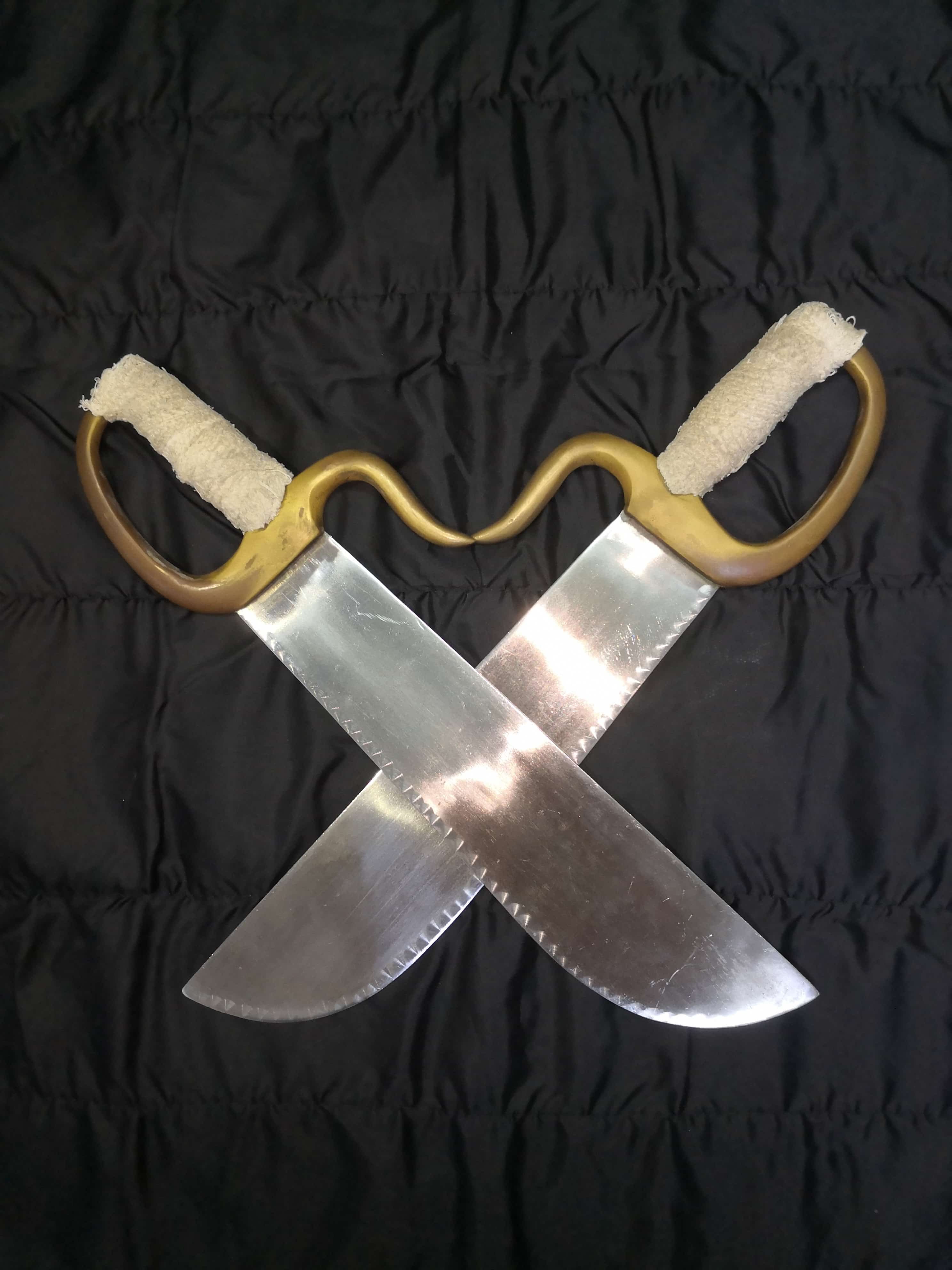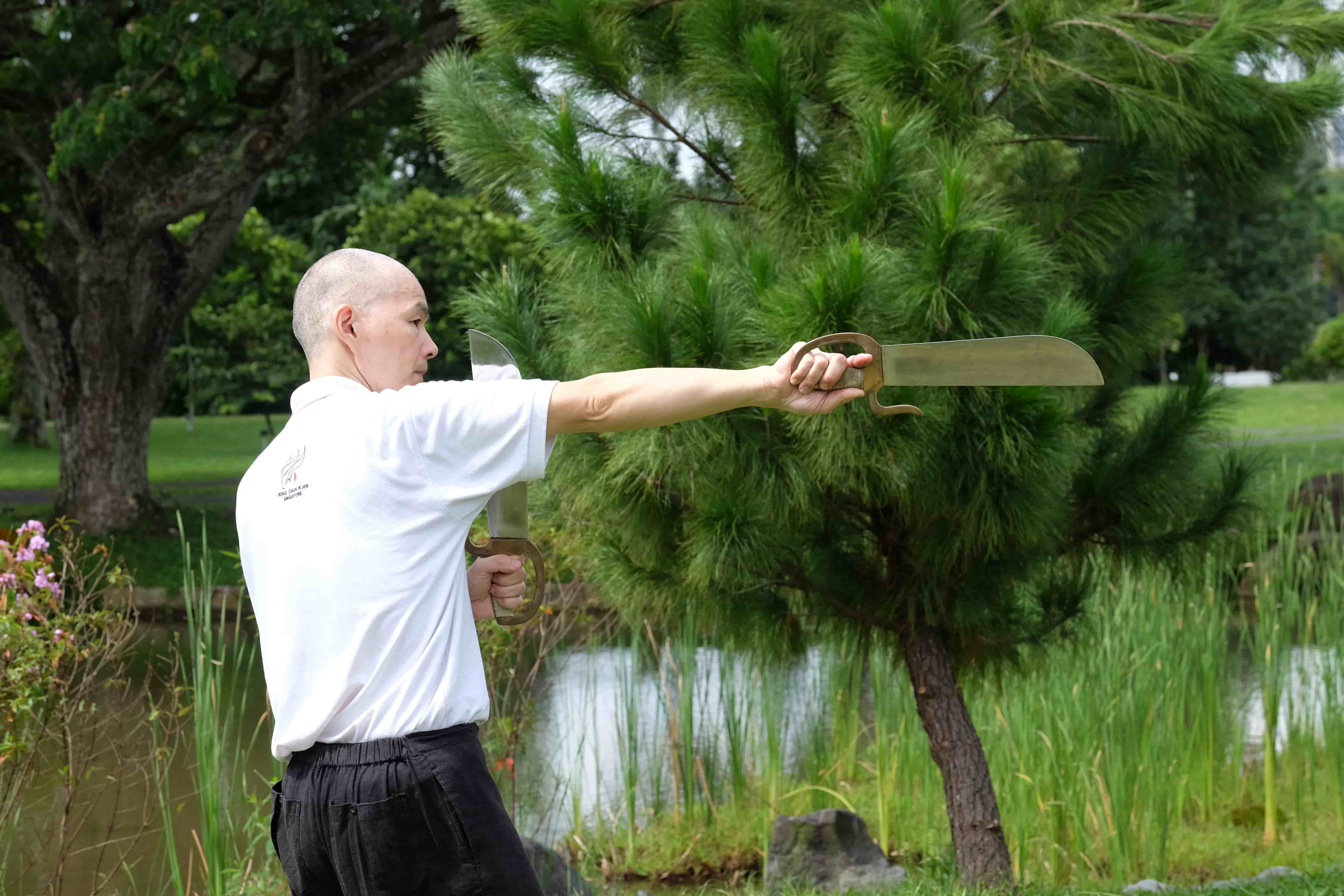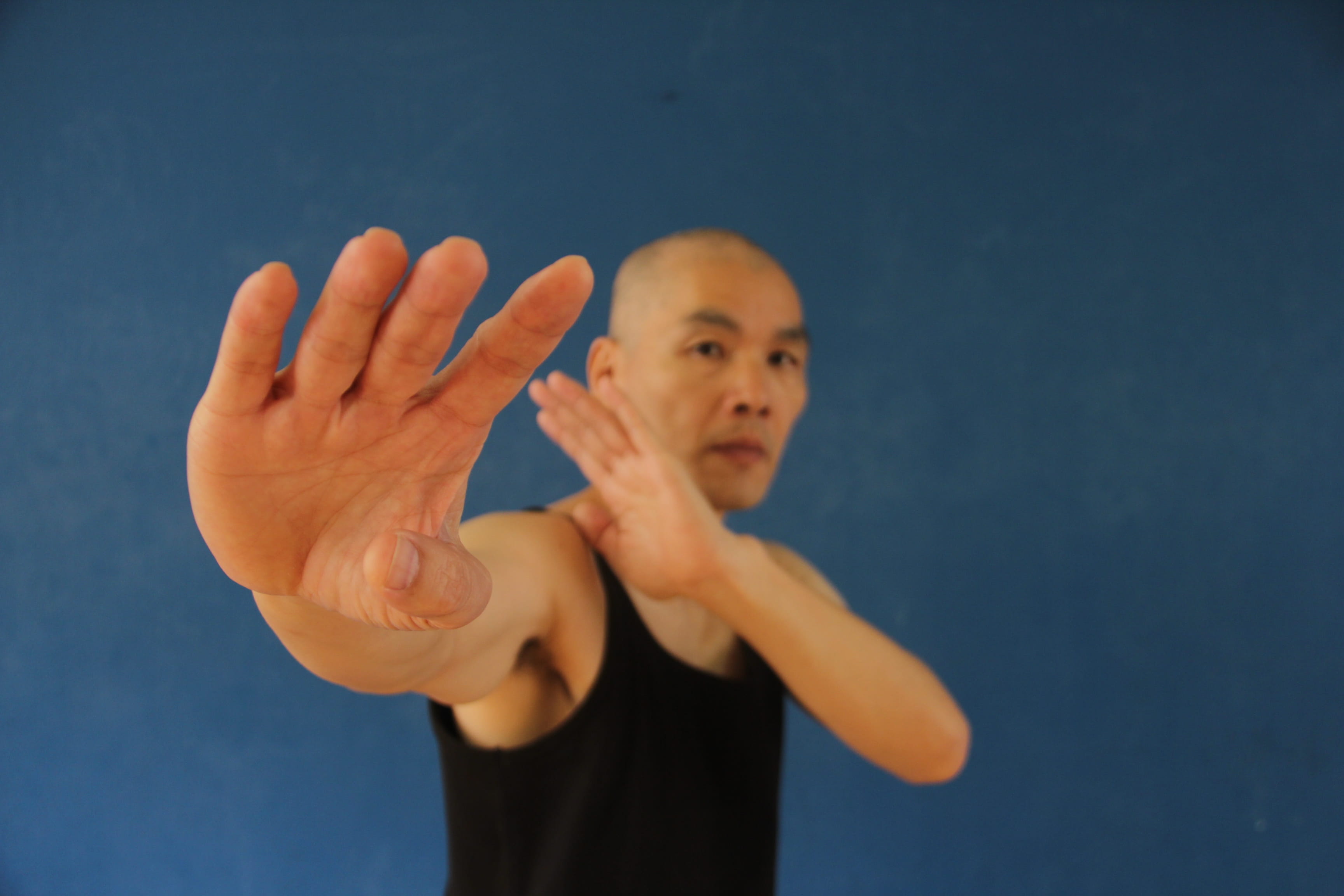
What is Wing Chun Kung Fu?
 Wing
Chun, sometimes romanize as Wing Tsun or Ving Tsun. Pinyin: Yǒng
Chūn, Chinese character (詠春); Wing
Chun Kun Fu is the most effective & practical concept-based,
southern style Chinese martial arts system around.
Wing
Chun, sometimes romanize as Wing Tsun or Ving Tsun. Pinyin: Yǒng
Chūn, Chinese character (詠春); Wing
Chun Kun Fu is the most effective & practical concept-based,
southern style Chinese martial arts system around.
Wing Chun specializes in close quarters combat, quick punches and kicks are seen in Wing Chun. Wing Chun is highly fluid style of self defence which is design to neutralize explosive and high powered attacks by deflection and re-direction of energy (force)!
Basic Wing Chun concepts is its simplicity; include simultaneous attack and defence, centre-line control, and forward intention, hand immobilization, reflexes responses etc.
The technique of Wing Chun was specifically designed to viciously incapacitate an attacker quickly with maximum efficiency. Common striking targets include vulnerable soft tissue areas like the eyes & throats, low kicks to the groin and stump kick to break knees and ankles.
Wing Chun Kung Fu System can be characterized by:-
- Straight and centre-line concept.
- Defence and offence which are deployed simultaneously.
- Using deflection rather than blocking to neutralize attacks.
- Lightning fast reflexes.
- Small body movements.
- Techniques which flow rapidly like bullets from a machine gun.
- Explosive power generated in a very short distance, like the releasing of compressed coiled spring.
- Hands and feet working in unison.
- Narrow stance and agile footwork.
- Low kicks that rarely go above the waist, often felt but unseen.
Fighting fit with Wing Chun
You know that regular exercise is the best way to improve physical health condition and fight disease, reduce tension, elevate and stabilize mood, improve sleep & self-esteem.
Chinese martial arts are rich in culture and history; since ancient times people have taking up martial arts for warfare; to defend land and livestock. And during peacetime people would practice "sparring forms" or wield swords or poles to amuse themselves or an audience.
Competition such as archery, fencing, combat wrestling (角力/手搏), and lifting of stone weights were frequent event and people with weak physique or illness would participate in Gong Fu gymnastics to improve their physical health.
Our ancestor has understood that engaging in regular physical activities prevented certain illness and internal organ blockages (modern-day cardiovascular disease) due physical inactivity.
Today the fundamentals of martial arts have not changed at all, it still has retained its core philosophies of combat, entertainment and health.
WING CHUN system is infamous for its combat and self-defence capability but most people overlook its health side of the system.
Being passionate about wing Chun and traditional Chinese martial arts, our holistic curriculum will benefit your health and well-being, our high intensive aerobic exercises are specifically design to improve your cardiovascular system, stamina, strength and muscle tone.
Whilst our joint mobility exercises are specially target to loosen tight joints, strengthen ligaments and tendons. And not to mention Chi Sau (Sticky hand) exercise will help to relieve your mental stress too!
On top of the Wing Chun specific syllabus, we also teach traditional Chi Kung (Qigong) health related exercise for those are inquisitive and interested in health and meditative practice.
The benefit of learning wing chun
- Practical self-defence for the street.
- Improve your cardiovascular system.
- Relieve stress.
- Build self-esteem and confidence.
- Develop self-discipline.
- Increase flexibility and agility.
- Burn calories and lose weight.
- Make new friends with like minded people.
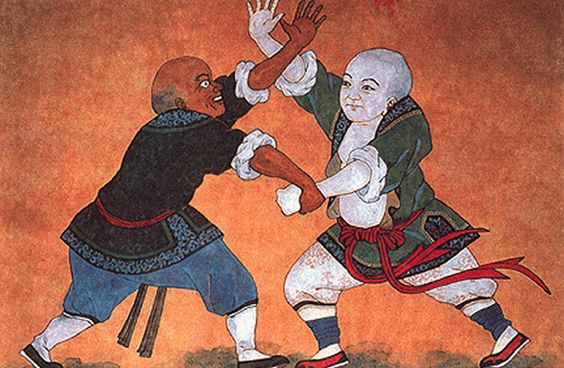
Source: Internet
Our Wing Chun System
Siu Lim Tao - The first Form
 It is common for Chinese characters to have more than one meaning,
the Chinese character
(小念頭), Cantonese pronunciation “Siu
Lim Tao or Siu Nim Tao” can be translated as “small thought or
little idea”, it can also be interpret as a metaphor for having
the right doctrine or “correct view” which will lead one to
righteous path in life, and in the case of martial arts, the
development of skill mastery, focus on the small details. It's
always the little things that make the big things happen.
It is common for Chinese characters to have more than one meaning,
the Chinese character
(小念頭), Cantonese pronunciation “Siu
Lim Tao or Siu Nim Tao” can be translated as “small thought or
little idea”, it can also be interpret as a metaphor for having
the right doctrine or “correct view” which will lead one to
righteous path in life, and in the case of martial arts, the
development of skill mastery, focus on the small details. It's
always the little things that make the big things happen.
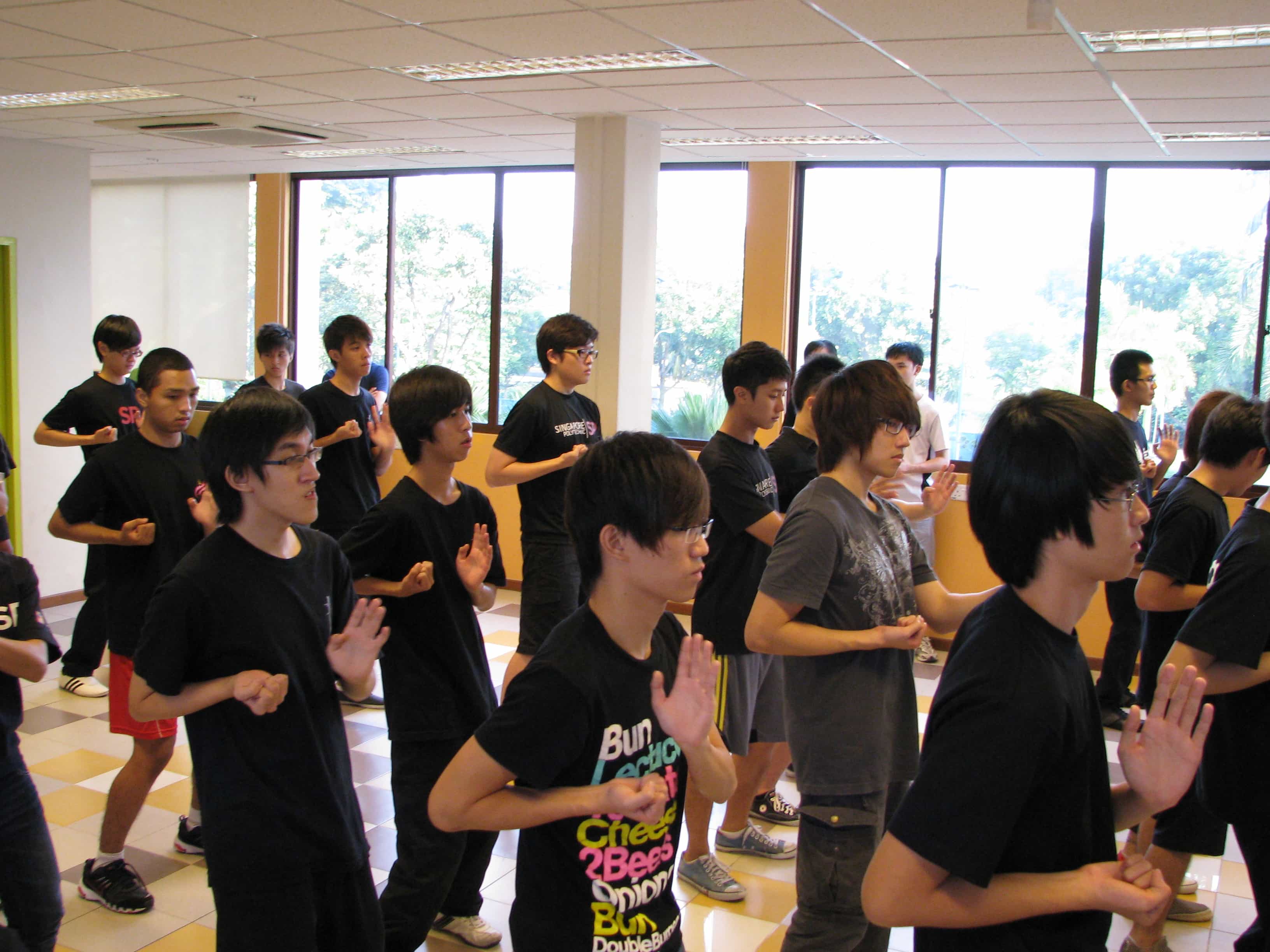
There are three Forms in Hong Kong Yip Man Wing Chun system; Siu Lim Tao, Chum Kiu and Biu Tze. Beginners will start with learning Siu Lim Tao first to become familiar with the Wing Chun stance and structures, basic hand techniques and the centreline theory etc.
The movements are simple and easy to remember, but don't underestimate this simplistic Form, because every movement in the Siu Lim Tao will become the foundation and prerequisite for all future movements, such as in Chum Kiu and Biu Tze “sticky-hands” wooden dummy etc, will be evolved from this Form.
Siu Lim Tao basically can be split into three sections each having its main core objectives, 1st section deal with training and developing elbow energy (肘底力/不動肘), focus and intention (念力). 2nd section focus on developing & proper use of power (發力), 3rd section is the basic hand techniques.
Siu Nim Tao is the most important Form in the Wing Chun system, the Form is practice in static posture, when practicing the Form one must do it slowly, particularly the 1st section of the Form especially, slow and smooth but not sluggish, initial practice for beginner may last 5 to 10 minutes, as experience, stamina and focus improve one can increase duration of the practice.
The body mechanics for practicing Siu Lim Tao are that your stance must be comfortable, both feet parallel shoulder width apart with 50/50 weight distribution, knee slight pull in to each other, spine align vertically, lower back straight, perpendicular to the floor, tailbone point to ground and hips gently rolling under. Soft chest, long back with scapula, or shoulder blade rounded, sink down open to the side, elbow tip face the floor. Chin slight tuck in and head should float lightly above your neck.
These fundamental requirement is the foundation for developing internal power and health benefit. Siu Nim Tao train the body and mind to relax in a meditative state. When you are in a relax state your parasympathetic nervous system releases a hormone called acetylcholine that slows your heart rate down, lower your chances of heart disease. Also it can actually block effects from your body's response to stress which are good for your mental and physical health!
Chum Kiu - The Second Form
 Chum Kiu (尋橋) is the second Form in
the Wing Chun System, which can be translated as “searching or
seeking for the bridge”. A “bridge” normally refer to a
structure that is built over a railway, river, or road so that
people or vehicles can cross from one side to the other. In
Chinese martial arts, the term “bridge” or “bridge hand” is
referring to the hands or arms.
Chum Kiu (尋橋) is the second Form in
the Wing Chun System, which can be translated as “searching or
seeking for the bridge”. A “bridge” normally refer to a
structure that is built over a railway, river, or road so that
people or vehicles can cross from one side to the other. In
Chinese martial arts, the term “bridge” or “bridge hand” is
referring to the hands or arms.
In a fight scenario when you strike your opponent, you are making a “bridge” between you and your opponent, likewise when your opponent strike you and if you don't want to get hit, you need to “receive the bridge”, either by blocking, deflecting, re-directing or simply by moving your body away so that your opponent can not “cross the bridge” to hit you!
In Siu Lim Tao all the technique are practice in a square and static posture, and in Chum Kiu turning, stepping and kicking are introduced. Again the Form can be split into three main section, 1st section focus on developing proper mechanic in “hip turning”. 2nd section focus on more turning, stepping, footwork and kicking.
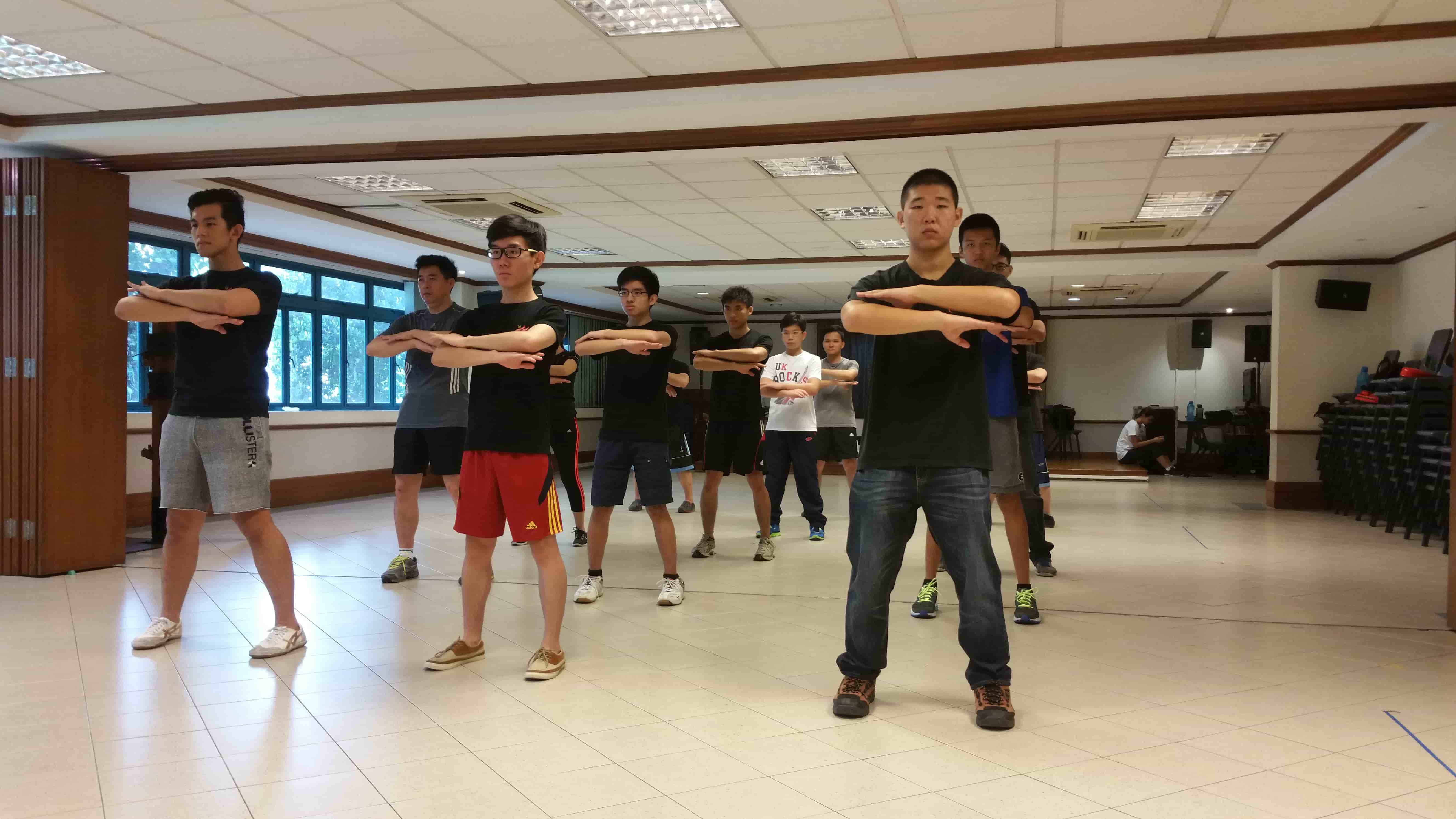
Moving and change the stance to face different direction; the directional change is important for attack and defense. In section 3, more kicks and footwork are practice and shifting body weight. Learning to use your moving body momentum as counter weight to gain advantage against a bigger opponent.
It is important that the body should turn as a single unit, all body parts move and stop at the same time. Hand & leg, elbow & knee, shoulder & hip all synchronized & connected and move in unison.
Bong Sau; is the key to effective “bridging”, Stepping; move you in or out of range, Turning; is the secret for dissipating force from an attacker. And for practical reason all Wing Chun kicks are deploy below the navel height and in general kick only when you have hand contact or touch established.
Biu Tze - The Third Form
 Biu Tze (標指) is the third Form in
the Wing Chun System, it can be translated as “thrusting
finger”. The Form consist of a various of turning elbow strikes,
finger jabs, Lap Sau, Gaun Sau, Fook Sau, etc. Although the Form
in application have different types elbow strikes, such as
horizontal elbow, 45 degree elbow, vertical elbow and overhead
elbow, but in the Biu Tzu Form it's common to practice the
overhead elbows only, simply because it is the most difficult
one to execute and involve the maximum range of shoulder motion.
Biu Tze (標指) is the third Form in
the Wing Chun System, it can be translated as “thrusting
finger”. The Form consist of a various of turning elbow strikes,
finger jabs, Lap Sau, Gaun Sau, Fook Sau, etc. Although the Form
in application have different types elbow strikes, such as
horizontal elbow, 45 degree elbow, vertical elbow and overhead
elbow, but in the Biu Tzu Form it's common to practice the
overhead elbows only, simply because it is the most difficult
one to execute and involve the maximum range of shoulder motion.
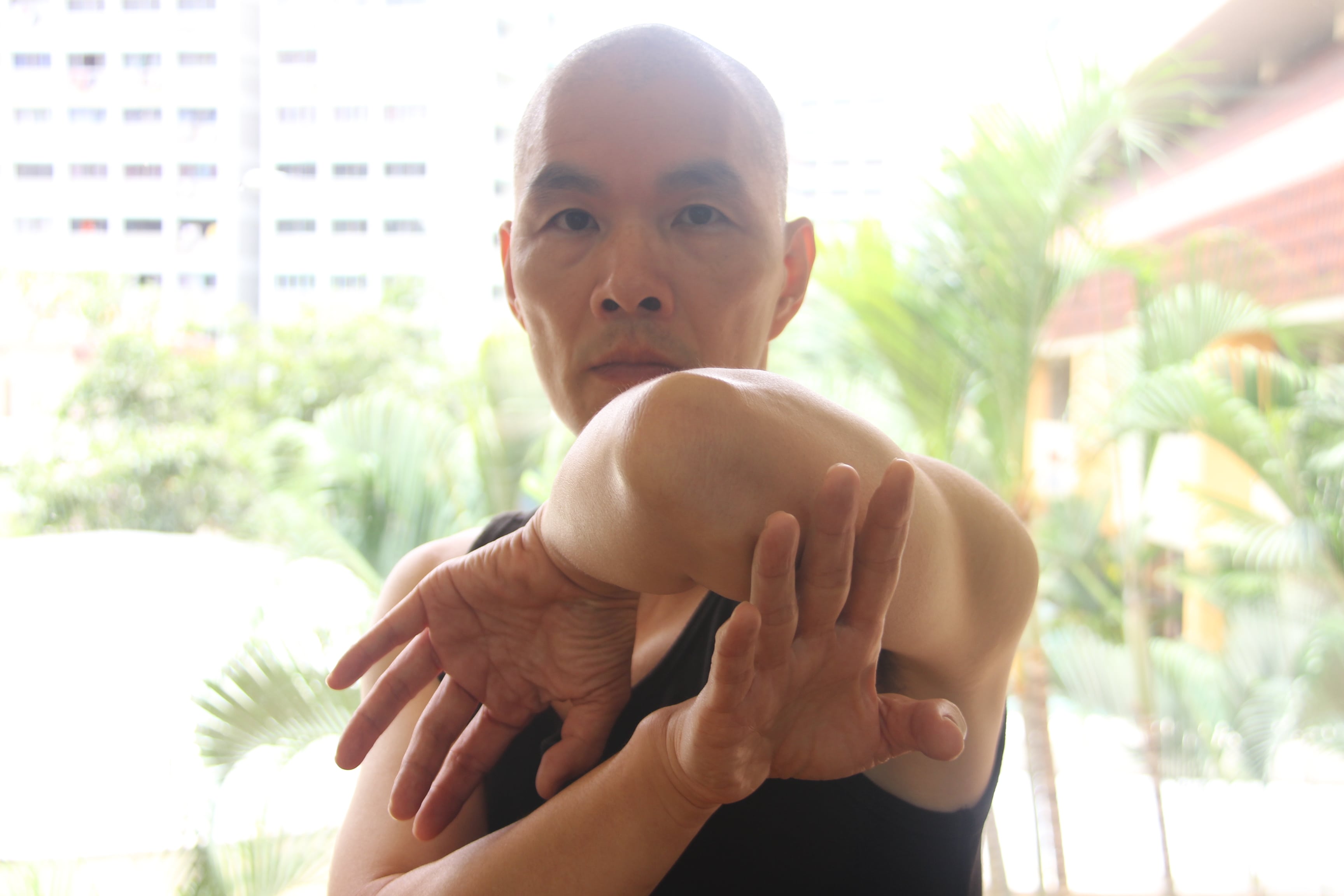
Contrary to popular belief, most people think of Biu Tze as a an “offensive” Form for attacking rather than for defensive, a lot of the time techniques in Biu Tze are used for emergency recovery. In combat if one over-commit a technique or the body position has been compromised, Biu Tze techniques can be used to regain centreline and control; typically a finger jab to your opponent's eye or Mun Sau (asking Hand) along your opponent's centre-line will force him to block or "bridge" and whenever your opponent "bridge” Lap Sau or Chi Sau can be apply to neutralize your attacker's advance.
At the beginning of the Form, there is set of wrist loosening routine, this is to develope “long bridge” method of generated power thought linking all the major joint in our body simultaneously, for simplicity think of it as the shoulder, elbow, wrist and fingers tips all contract or relax at the same time akin to the working principle of a jack hammer producing power without much of exaggerated chambering.
Chi Sau - Sticky Hands
 Chi Sau - Sticky hands (黐手) is a
very important aspect in learning the Wing Chun system, it can
be said that if you understand Chi Sau you understand Wing Chun.
When learning or practicing Wing Chun one's ability is not
determined by how well one does the Forms but by how well one
does Chi Sau.
Chi Sau - Sticky hands (黐手) is a
very important aspect in learning the Wing Chun system, it can
be said that if you understand Chi Sau you understand Wing Chun.
When learning or practicing Wing Chun one's ability is not
determined by how well one does the Forms but by how well one
does Chi Sau.
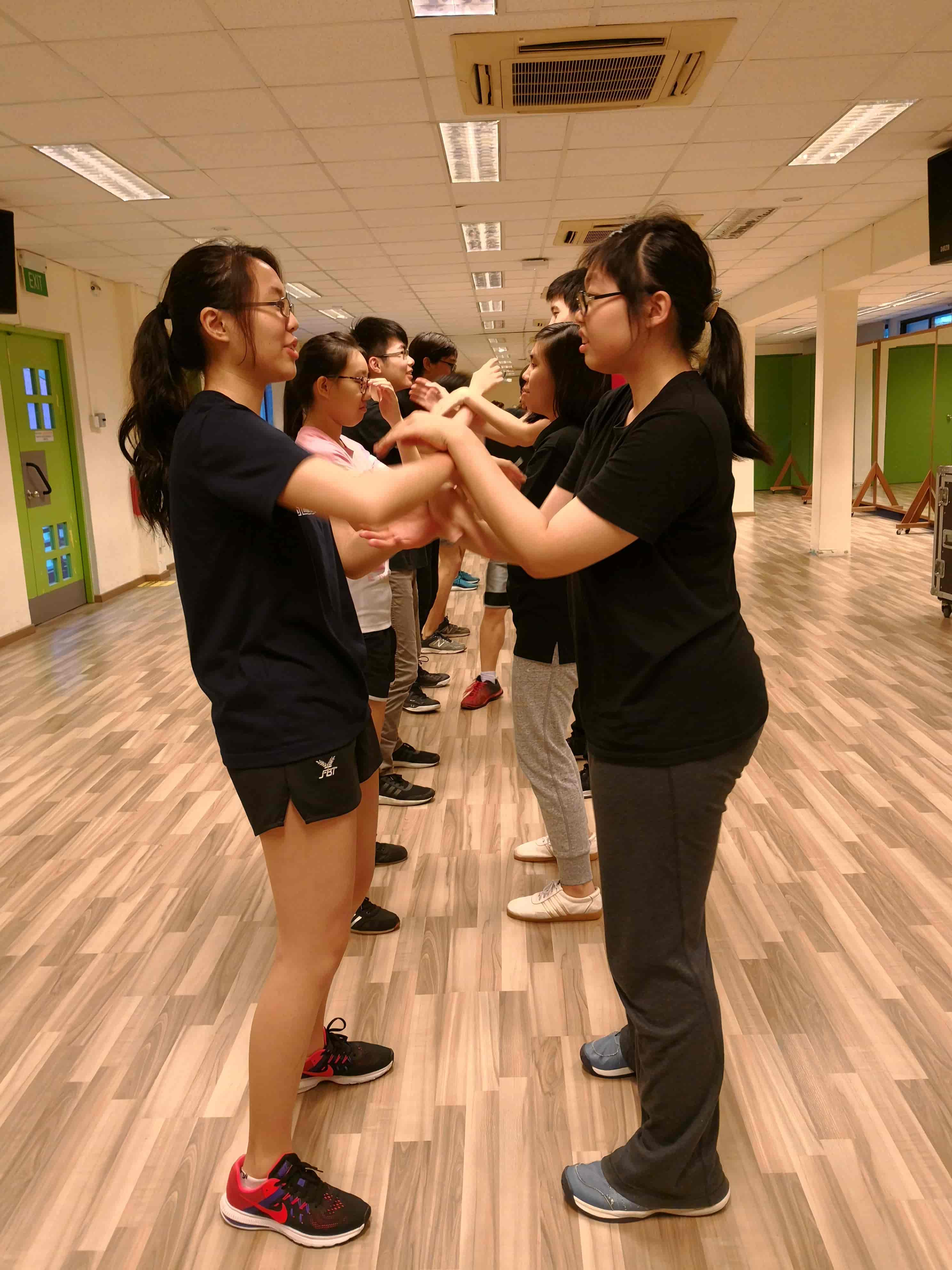
Chi Sau can be view as a bridge between the empty hand Forms and fighting, but Chi Sau is not the same as fighting. Fighting is a contest; contest have winners & losers, in Chi Sau the real winners is the person who can develope sensitivity and conditioned reflexes, correct use of energy and proper positioning!
In Chi Sau, the real objective is using your hand to sense your opponent's attack intention through touch, so that you can learn how to control and manipulate the power or force from your opponent.
During Chi Sau one must learn to move with your opponent's energy at the same time able to protect oneself, monitor your opponent, react & neutralize the attack accordingly.
Before you learn Chi Sau, you must have the right attitude towards practicing Chi Sau, we all know getting hit hurts, so there is no need to verified this, focusing on tit-for-tat hitting, or worrying "payback" or "revenge attack", landing heavy blows on each other is not the objective here!
Preferably allow your "training partner" to "attack" you, so that you can try and practice your Chi Sau skill in neutralize his "attack"! If your goal is test your fighting skill, do contact sparring instead!
Chi Sau is for sensitivity training, initially Chi Sau is practice in single hand with a partner in fix sequence and responses, with emphasis on proper position, correct use of energy and timing.
The next stage would be two hand simultaneously, again with fix sequence and responses, once the basic two hand "rolling" reach acceptable standard, the next stage will be "crossing hand" or free-flow, where either training partner can initiate attack or defence response; its akin a game of chess, move a chess piece, get a response, check and mate!
Muk Yan Jong - Wooden dummy
 Muk Yan Jong or Wooden Dummy generically refer to a wooden pile
in the ground, used by varies style of Chinese Kung Fu school in
martial arts training. Some are single stake, some are multiple
piles, some have arms and leg, specifically designed for
empty-hand, kicking or weapon (Long Pole, Spear, Broadsword
etc.) training!
Muk Yan Jong or Wooden Dummy generically refer to a wooden pile
in the ground, used by varies style of Chinese Kung Fu school in
martial arts training. Some are single stake, some are multiple
piles, some have arms and leg, specifically designed for
empty-hand, kicking or weapon (Long Pole, Spear, Broadsword
etc.) training!
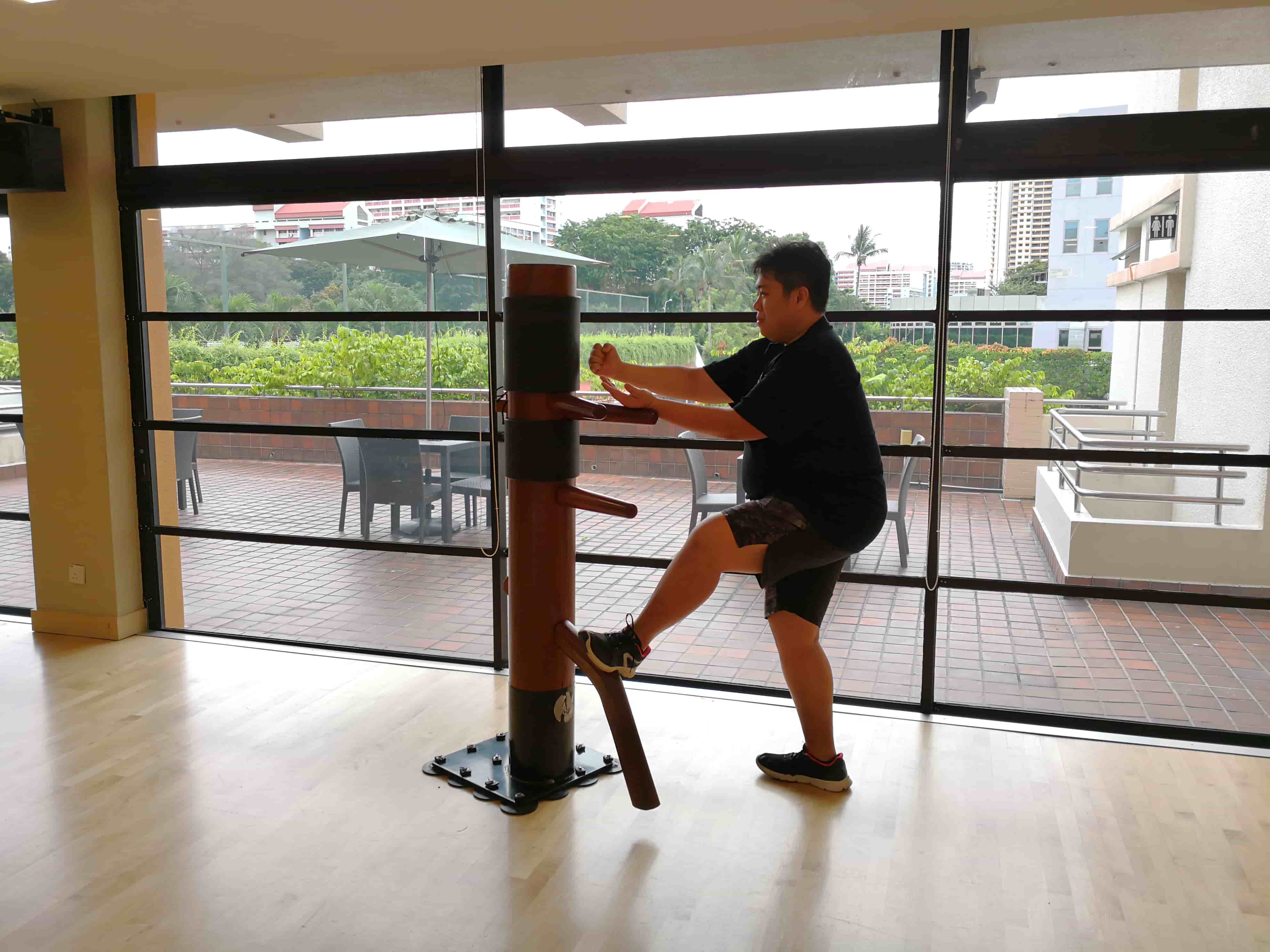
The old style of Wing Chun dummy typically consist of wooden trunk or body partially buried in the ground, two upper arms, one middle arm and a leg which are made to represent a stylize human form. Nowadays as most people live in multistory building unit, the modern dummy now available are usually free standing or wall mounted & have many new material and features incorporated.
A wooden dummy is a great training apparatus for Wing Chun practitioner, its main purpose is fine tune your overall hand & leg coordination. Through persistent practice on the Wooden Dummy one can improve his Wing Chun skills greatly, the Dummy is like a best “silent training partner” available 24/7 and all year round.
All the movements in the Dummy Form can be found in the three Wing Chun Forms, Siu Lim Tao, Chum Kiu & Biu Tze, this is why normally student will only start learning the Dummy Form only after completion of the three basic Forms! The Wooden Dummy Form consist of eight section and 116 movements in total. Each section focus on a different set of objective.
Initial stage is learn all the movements in each sections, repetition after repetition, so that action become reflexes. Before you practice you must understand the requirement of each moves, position, the appropriate use of force etc. Wrong position, incorrect technique or excessive use of force could bring detrimental effect if wrong habits are drill in!
The second stage is "Polishing the Dummy", after familiar and fluent with the basic movements, extract important sequence of movements from each sections, practise, practise & more practise, so that every movements become instinctive & second second nature!
The third stage is to “free fight” with the Dummy, using random attack and defence moves on the Dummy. Because the Dummy does not move or "fight back", when practicing free-flow with the Dummy you need to add your intention & visualization in your practice. Making "eye contact" with the Dummy, control, sticking & monitoring the Dummy, imagine the Dummy fighting back as you break contact or control.
Lastly when practicing on the Dummy, there is no need to hit the Dummy with excessive brute force, if you have fully understand the concept and principle in Wing Chun. Sticking to the Dummy like a wet towel is the Key to the door and not using sledge hammer trying fight your way in!
Luk Dim Boon Gwan - Six & a Half Point Pole
 Six
& a Half Point Pole; (Cantonese pronunciation; Luk Dim Boon Gwan
(六點半棍)). This is the name given to
the Pole Form, it consist of six essential core moments practice
with a long wooden pole, commonly found in the Southern Chinese
martial arts system. The pole itself is generically refer to as
“Long Pole or Rat-Tail Pole”
(長棍 或 鼠尾棍).
Six
& a Half Point Pole; (Cantonese pronunciation; Luk Dim Boon Gwan
(六點半棍)). This is the name given to
the Pole Form, it consist of six essential core moments practice
with a long wooden pole, commonly found in the Southern Chinese
martial arts system. The pole itself is generically refer to as
“Long Pole or Rat-Tail Pole”
(長棍 或 鼠尾棍).
Traditionally the long pole has an average length around 9 feet 6 inches, and is tapered from the base roughly 2 inches in diameter to about 1 inch at the tip, which resemble an oversize snooker cue. As the name implied the form consist of six and half moments, (in Chinese: 標、抽、冚、撥、點、挑、攔). Each movement have a specific requirement, training method and application.
It is said that the Pole Form was not part of the original Wing Chun system but was traded via skill exchange with a Shaolin Temple monk, it's evident that the pole is practice with wide horse stance, cat stance & front stance which are not common in the native Wing Chun system.
As the long pole become a incorporated into the Wing Chun family, the Wing Chun concept and philosophy has been fusion into this Long Pole Form, characteristically there is no fancy or flowery movement, no twirling or spinning of the pole, no chambering for power; attack and defense are simultaneously.
Baa Cham Dao - Eight Slashing or Cutting Knives
 Baa Cham Dao (八斬刀) is the name of
the Wing Chun Knives Form, the Form is practiced with a pair of
short blade roughly length of ones forearm from tip to the
guard.
Baa Cham Dao (八斬刀) is the name of
the Wing Chun Knives Form, the Form is practiced with a pair of
short blade roughly length of ones forearm from tip to the
guard.
The pair of short knives used in the Baa Cham Dao Form are typical butterfly sword (蝴蝶雙刀 或 合掌刀 或 子母刀) commonly found in Southern Chinese Martial arts system, its call a butterfly knives because when the knives are hung on walls it resemble the shape of a butterfly and pair of hands when folded together.
The Form consist of eight section, and each sections consist of eight basic cutting or slashing movement hence the name Eight Cutting Knives Form. Also “eight” is auspicious in Chinese culture!
To practice the Wing Chun knife form well, one must first have a strong foundation in Wing Chun technique as the basis, because the entire set of knife movements evolved from the Wing Chun empty-hand Form!
